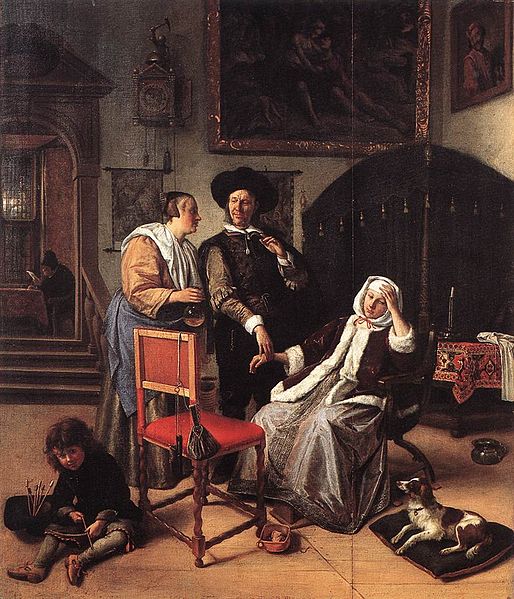Physicians were the most socially prestigious of the three practitioners. Only physicians were granted the title "Dr." They typically came from genteel families who could afford educations for their sons. There were no medical schools in England and training, such as it was, was wholly academic in nature. Those who aspired to become physicians studied texts centuries (and sometimes millenia) old--not for historical perspective, mind you, but for actual professional guidance. The Royal College of Physicians licensed physicians, but an additional fellowship could be obtained by those who studied at Cambridge or Oxford. Most physicians practiced in London, where they could build up a clientele with money and social standing.
 |
| I deign to touch your wrist, but we will never speak of this again. |
Next down the medical totem was the real workhorse of Regency medicine, the surgeon. Unlike modern surgeons, the nineteenth century surgeon was not given the "Dr." designation in his name, only "Mr." There was no formal training to become a surgeon. A young man who wished to practice surgery carried out an apprenticeship, the same system through which blacksmiths and carpenters and every other manual laborer trained.
The local "sawbones" worked in the trenches of human suffering. He set broken bones and performed amputations and surgeries and bleedings. Many of his patients would die of infection after an operation, but bacteria and sanitation were not yet understood; he did his best with the knowledge available to him. The local surgeon was summoned in the middle of the night to attend the sick and almost certainly suffered every sort of indignity as he treated all manner of digestive complaints. Food poisoning was rife, as were ailments resulting from impure water and even contamination from storage containers. The surgeon was confronted with illnesses such as influenza and small pox, as well as chronic conditions like diabetes, arthritis, and gout.
An interesting historical tidbit: In the early nineteenth century, surgeons were legally prohibited from performing dissections on human corpses, except for the remains of executions. The papier-mâché models created for training purposes just weren't sufficient to teach real human anatomy. Necessity brought surgeons into partnership with the criminal element. Grave robbers, called "resurrection men," dug up freshly buried bodies and sold them to surgeons who used the corpses to expand their understanding of anatomy and disease.
 |
| The skeleton was a surprisingly able assistant. |
 |
| Of course it will work! I wouldn't lie to you in this hat. Also, I have an aloe plant, so you know I'm legit. |
As the century wore on, the medical field evolved to give rise to the general practitioner, the doctor whose knowledge combined that of the physician and the surgeon. Getting there was slow going, however, and so the health of those who lived during the Regency was directly affected by the social status of the men who treated them.
